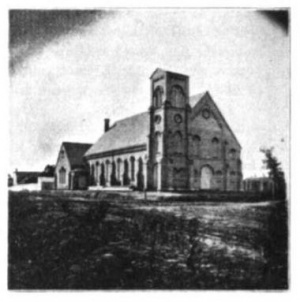Difference between revisions of "First Presbyterian Church"
From FranaWiki
| Line 13: | Line 13: | ||
[[Image:First-presbyterian-lr.jpg|thumb|300px|First Presbyterian Church of Little Rock at Fifth and Scott streets.]] | [[Image:First-presbyterian-lr.jpg|thumb|300px|First Presbyterian Church of Little Rock at Fifth and Scott streets.]] | ||
| − | '''First Presbyterian Church''' was established in Little Rock in 1828 under the leadership of Reverend [[James W. Moore]]. Moore was known for removing "wickedness and vice" from the town and replacing it with "morality and piety." | + | '''First Presbyterian Church''' was established in [[Little Rock]] in 1828 under the leadership of Reverend [[James W. Moore]]. Moore was known for removing "wickedness and vice" from the town and replacing it with "morality and piety." |
The congregation constructed a brick and stone English Gothic church on the southwest corner of East Eighth and South Scott streets (123 East Eighth Street) in 1921. The church was designed by [[John Parks Almand]]. The [[Little Rock Boys Club]] stood directly across Scott Street to the east. | The congregation constructed a brick and stone English Gothic church on the southwest corner of East Eighth and South Scott streets (123 East Eighth Street) in 1921. The church was designed by [[John Parks Almand]]. The [[Little Rock Boys Club]] stood directly across Scott Street to the east. | ||
Revision as of 09:59, 14 March 2010
Street View of First Presbyterian Church |
First Presbyterian Church was established in Little Rock in 1828 under the leadership of Reverend James W. Moore. Moore was known for removing "wickedness and vice" from the town and replacing it with "morality and piety."
The congregation constructed a brick and stone English Gothic church on the southwest corner of East Eighth and South Scott streets (123 East Eighth Street) in 1921. The church was designed by John Parks Almand. The Little Rock Boys Club stood directly across Scott Street to the east.
References
- Ira Don Richards, Story of a Rivertown: Little Rock in the Nineteenth Century (1969), 14-15.
